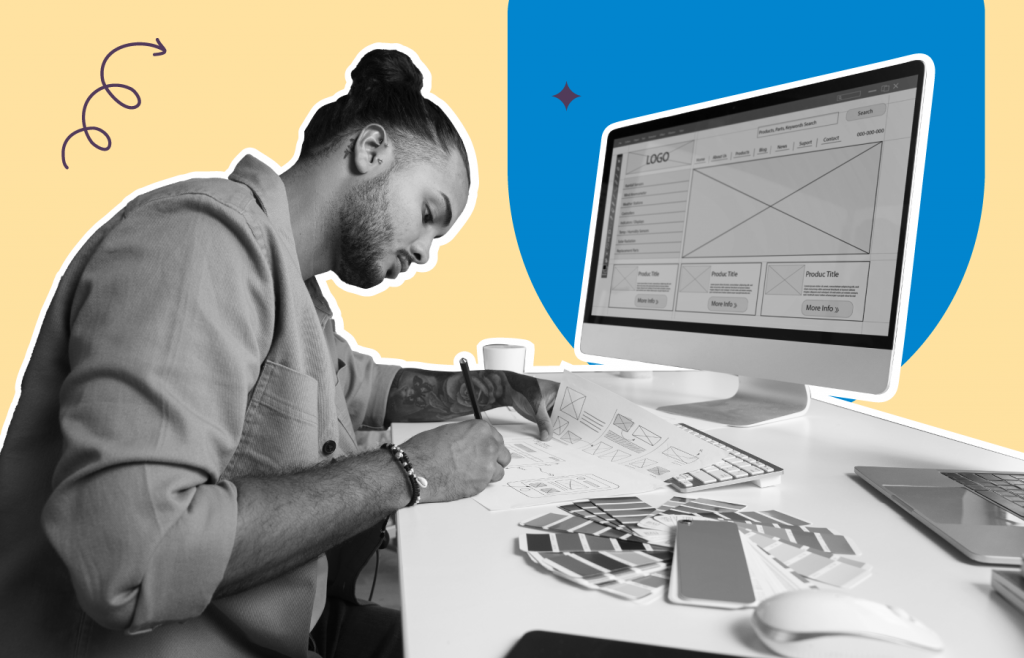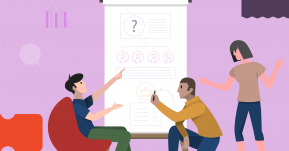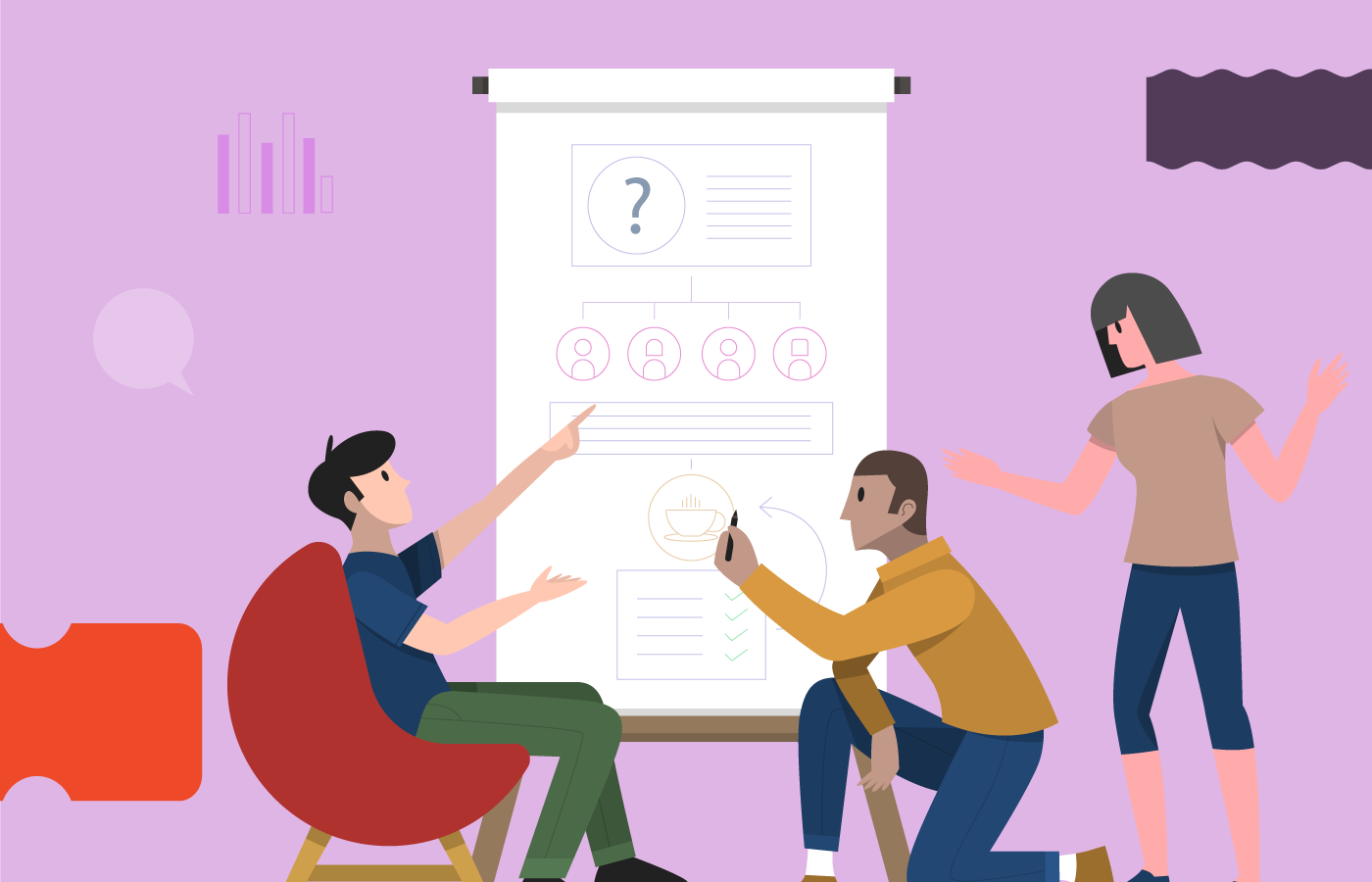User interface (UI) design has become a hot topic these days. Perhaps that’s why you are reading to find out what it’s all about in the first place.
Let’s start with a UI design definition.
UI design means User Interface design. It focuses on the user’s visual experience in an application, software, website, etc. It is what a user uses to interact with the product; it deals with the product’s look, style, and feel.
For example, UI design makes it possible to tap a button or swipe through pictures on the website.
This article will teach you the basics of UI design, what it is and why it is so important. It will also discuss the stages involved in UI design and tools to help you execute a great UI design.
1. The Key Differences Between UI and UX Design
If you Google search “what is UI design?” you will find many articles using UI and UX design interchangeably. Is there a difference between the two? The answer is yes.
- UX is concerned with the feelings and emotions users experience when they interact with a product. On the other hand, UI refers to the visual elements that allow users to interact with a product.
- Another difference is that while UI design focuses on the look and feel of the product, such as colors, images, etc., UX design focuses on the product’s user-friendliness.
- The goal of UX design is to give users a product that is efficient and easy to use, UI design aims to provide users with a usable, aesthetically pleasing product optimized for different screens.
2. What Are The Stages of he UI Design Process?
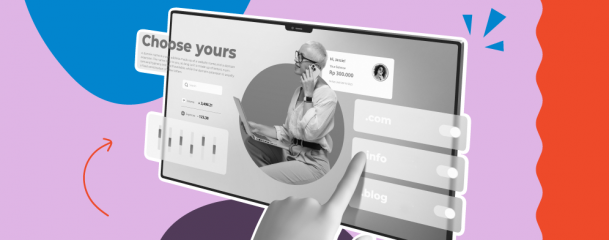
There are four main stages in the UI design process. These are the research, design, testing, and implementation stages.
2.1. Research Stage
When it comes to UI design, you do not jump right into creating the interface. You must first research; for instance, by analyzing your competitors.
This is because your app, software, website, etc., is most likely not the first in the market. Researching your competitors’ UI will help you avoid the errors they could not prevent and improve in places where they are thriving.
You can also research by surveying and interviewing prospective users of your system. When you talk to the users, you will find out the features and elements they would like to see in your product, the color theme, the fonts, etc.
One UI design tool that can help you carry out surveys to understand your users’ needs is Typeform. Once you have gathered enough research data, you can proceed to the next stage: Designing.
2.2. Design Stage
This is the stage where the UI designer gives life to the ideas in the research stage. It is also in this stage that the designer or design team works on the final graphics. It comprises processes such as sketching, wireframing, and prototyping.
2.3. Sketching
This is where designers make handmade sketches to visualize the interface concepts in simple terms. Sketching helps designers visualize initial representation characteristics. A good UI design tool for this process is Sketch.
2.4. Wireframing
A wireframe is simply the skeleton of the interface. In technical terms, wireframes are outlines that show the design’s layout and functions. They start as low-fidelity sketches that develop into mock-ups that will mimic the final design.
Tools like Balsamiq and Figma make the wireframing process a breeze. You can try them out for your UI design.
2.5. Prototyping
A prototype is a simulation or sample version of the interface design. The prototype allows you to test your ideas and design before you develop the final version.
Knowing how crucial prototyping is, Maze and Invision are two of the best UI design tools you can use in this design phase.
2.6. Testing Stage
The testing or user testing stage is a very vital aspect of the UI design process. Without testing your design or product, you will not know if the design will meet your users’ needs. You can carry out user testing at various points of the design process.
The earlier you start testing your design, the more money and time you will end up saving. When you carry out tests frequently, you will address problems the design has and quickly develop solutions.
Usability testing is a common technique UI designers use to determine how smooth and user-friendly their design is. Using a tool like UsabilityHub during the testing stage of the process makes the work less difficult for UI designers.
The fixes are then implemented into the prototype to enhance and modify the design, ready for the last stage.
2.7. Implementation Stage
This is the final stage in the UI design process. In this stage, the UI designer works with developers to implement all the fixes, changes, and test results into the final version.
It is the finished work that your users will see and make use of at the end of the day. If you fail in the previous stages, you can be sure that this final stage will not be successful. You may not even make it to this stage at all!
3. Qualities of a Good UI Design
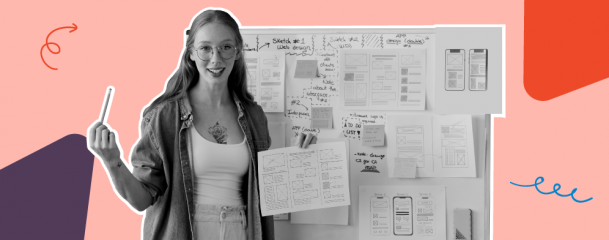
It is not enough for you to have a UI design; your design has to be superb. Check out the qualities of a good UI design below.
3.1. Simple
To know if you have a great user interface design, look out for unnecessary design elements. The features your UI design has should be not only relevant but also logical and concise.
When working on your design, before you include a design element, ask yourself if the user will need it to complete their task.
If you are certain they won’t, then, avoid using it in your UI design. Always remember, simplicity is key in UI design.
3.2. Consistent
In addition to having a simple UI design, you need to maintain a level of consistency throughout the whole experience. Microsoft Office is an example of a product with consistent UI design.
Each of their programs (Word, Excel, PowerPoint, etc.) have consistent interfaces for their taskbar. This makes it easier for users to learn how things work quickly.
It also makes it easy to figure out how new features work by relying on the knowledge of previous experiences. Finally, maintain the same language, layout, and design throughout your interface; this improves efficiency and user experience.
3.3. Clear
Clarity is another important quality of a great user interface design. While carrying out the user interface design process, always remember that the interface is supposed to help users interact with your system.
So, for you to achieve this, your interface must communicate with users. If your users cannot easily interact with the interface or use it, it will frustrate them and abandon the experience.
Create concise labels, simple messaging, easy navigation, and content to aid clarity in your interface. Furthermore, avoid lengthy explanations that clutter the interface.
3.4. Familiar
For a UI design to be a great success, it has to be intuitive for the user, and for it to be intuitive, it has to be familiar. How do you know if your UI design is familiar?
When you discover that users do not have to think about how to use your interface because they already understand it, then it is familiar. Users already know what to expect; they don’t need to start relearning before using it.
Try to identify areas in your interface to leverage familiarity, making it easier for users to interact with your system.
3.5. Efficient
You can liken UI to a vehicle that takes you places. When it comes to software applications and websites, these places are the functions the user finds on your system.
Your interface should allow the users to perform these functions fast and effortlessly. If you want to have a good interface, you have to figure out what your user wants to achieve, and then you proceed to ensure you let them do that without any hassle.
Implement any interface that lets people easily accomplish what they want.
4. Why is UI Design so Important?
UI design is important in the success of your application software or website for the following reasons.
- It makes it easy for users to navigate while using your product.
- Your UI design ensures everything is where it should be on your website.
- UI design is also important because it makes it easy for users to interact with your products.
- User interface design is important as it can make or break your customer base.
- UI design increases the flow of traffic to your website or software.
Now that you know how important is user Interface design is, it is essential to put a lot of thought into your next design project.
5. Conclusion
This article walked you through the basics of what user-interface design is all about. We focused on defining the concept, distinguishing between UI and UX design, and even the UI design process.
So, if you decide to go into UI design, you now have the knowledge you need to make an informed career decision.
6. FAQs
6.1. What is the basic concept of UI design?
UI design focuses on creating visually appealing and user-friendly interfaces for digital products by combining elements such as layout, typography, color schemes, and interactive components to enhance user experience and usability.
 Interested in Virtual Team Building Events?
Interested in Virtual Team Building Events?



